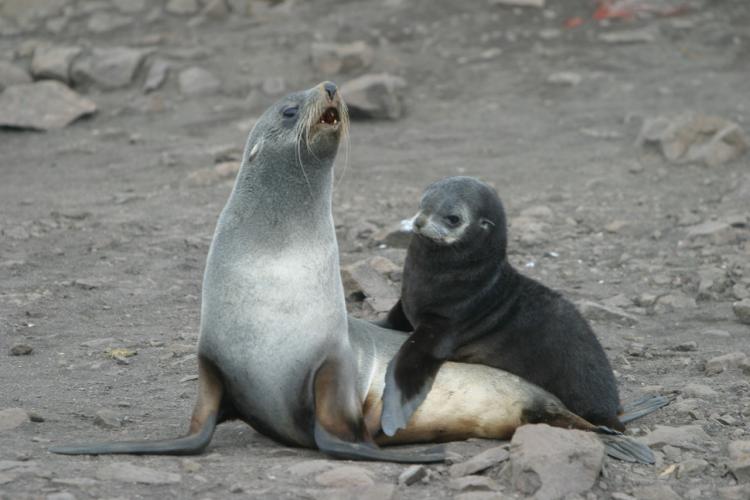The Pinniped Research Program studies fur seals and leopard seals from the Cape Sheriff field camp on Livingston Island in the Southern Ocean.
We monitor the population status, reproductive success, and foraging ecology of Antarctic fur seals, a krill dependent predator. We focus on a combination of metrics including diving behavior, foraging range and duration, energetics, diet, and pup production.
We work closely with other Antarctic Ecosystem Research Division programs. Information collected on oceanographic conditions, krill, and other predators, such as penguins, is used to better understand predator-prey interactions and ecosystem function across the Antarctic food web. Ultimately, our work supports ecosystem-based management of Antarctic krill fisheries by the Convention of the Conservation of Antarctic Living Marine Resources (CCAMLR).
Our team also studies leopard seals as another indicator species of the state of the Antarctic ecosystem. Leopard seals are charismatic apex predators that exert a top-down impact on species monitored by the CCAMLR, such as fur seals and penguins.
The majority of pinniped data collection occurs between November and April each year. Our field teams track, observe, sample, and occasionally capture seals. For example, in order to understand what these seals are eating we collect and examine feces, and collect and chemically analyze tissues such as whiskers and milk. We also attach small instruments, called bio-loggers, to free ranging seals which record where the animals go to find food, and how hard they need to work to get it (e.g., how deep and often they dive at sea). We also track population numbers and the body conditions of seals through time using visual, manual, and unmanned aerial system based approaches.


